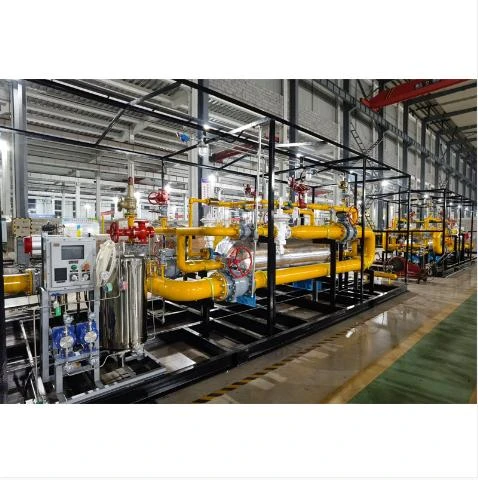
Dec . 12, 2024 09:20
Back to list
الشاحن الفائق
The Future of Superchargers Revolutionizing Electric Vehicle Charging
The rise of electric vehicles (EVs) has sparked a profound transformation in the automotive industry. As more consumers transition away from traditional gasoline vehicles, the demand for efficient and rapid charging solutions has surged. Among the most promising innovations in this field is the development of superchargers, which promise to significantly reduce charging times and enhance the convenience of EV ownership.
Superchargers are high-powered charging stations capable of delivering large amounts of electricity to electric vehicles within a short period. Unlike conventional charging stations that may take several hours to fully charge an EV, superchargers can recharge a vehicle's battery to around 80% in as little as 30 minutes. This advancement not only addresses the time-consuming aspect of charging but also alleviates the range anxiety often associated with electric vehicles.
Technology Behind Supercharging
The effectiveness of superchargers lies in their advanced technology. They utilize high voltage direct current (DC) to deliver power, as opposed to the alternating current (AC) used by standard chargers. This design allows for faster charging rates and minimizes the energy lost during the conversion process. For instance, Tesla's Supercharger V3 stations can provide up to 250 kW of power, showcasing the significant leap in charging capabilities that modern technology facilitates.
As battery technology advances, superchargers are also improving. The introduction of solid-state batteries, which are thinner, lighter, and charge faster than traditional lithium-ion batteries, could further enhance the efficiency of supercharging. For example, the combination of solid-state batteries with supercharging technology might allow users to charge their vehicles to full capacity in less than 15 minutes.
.
The proliferation of superchargers is integral to the success of electric vehicles. Many manufacturers, including Tesla, are already rapidly deploying extensive supercharger networks across various regions. Governments and private sectors are also investing heavily in the necessary infrastructure. As cities and countries set ambitious goals for reducing carbon emissions, the establishment of smart, efficient charging networks will play a crucial role in meeting these targets. In locations like Europe and North America, there is a race to install supercharging stations that are strategically placed along highways and urban routes, making long-distance travel more feasible for EV owners.
الشاحن الفائق

User Experience and Accessibility
The convenience of superchargers extends beyond mere speed. Many charging stations are being designed with user experience in mind. Features such as easy access, user-friendly interfaces, and real-time monitoring via mobile applications enhance the ease of use for drivers. Charging locations are often equipped with amenities such as rest areas, shops, and cafes, allowing drivers to relax while their vehicles power up.
Moreover, efforts to increase accessibility are crucial. In many regions, a focus on ensuring widespread availability of supercharger stations is essential to encourage greater EV adoption. This includes addressing disparities in charging infrastructure in rural vs. urban areas, ensuring that all EV owners have access to the necessary tools for convenient charging.
Environmental Impact
Beyond convenience, the widespread adoption of superchargers has significant environmental implications. Electric vehicles are typically more energy-efficient than their gasoline counterparts, and when powered by renewable energy sources, they can significantly reduce greenhouse gas emissions. As more supercharging stations incorporate solar panels or wind energy, the overall environmental benefits of electric mobility will increase, contributing to global efforts to combat climate change.
Conclusion
The development and deployment of superchargers represent a significant leap forward in the evolution of electric vehicles. By cutting down charging times, enhancing user experiences, and promoting wider access and infrastructure development, superchargers are pivotal in making electric vehicles practical and appealing for a broader audience. As the technology continues to advance, and as more consumers make the switch to electric, we can anticipate a future where supercharging plays a fundamental role in sustainable transportation. The journey toward a fully electrified mobility ecosystem is just beginning, and superchargers are at the forefront of this transformative movement.
Latest news
-
Safety Valve Spring-Loaded Design Overpressure ProtectionNewsJul.25,2025
-
Precision Voltage Regulator AC5 Accuracy Grade PerformanceNewsJul.25,2025
-
Natural Gas Pressure Regulating Skid Industrial Pipeline ApplicationsNewsJul.25,2025
-
Natural Gas Filter Stainless Steel Mesh Element DesignNewsJul.25,2025
-
Gas Pressure Regulator Valve Direct-Acting Spring-Loaded DesignNewsJul.25,2025
-
Decompression Equipment Multi-Stage Heat Exchange System DesignNewsJul.25,2025

